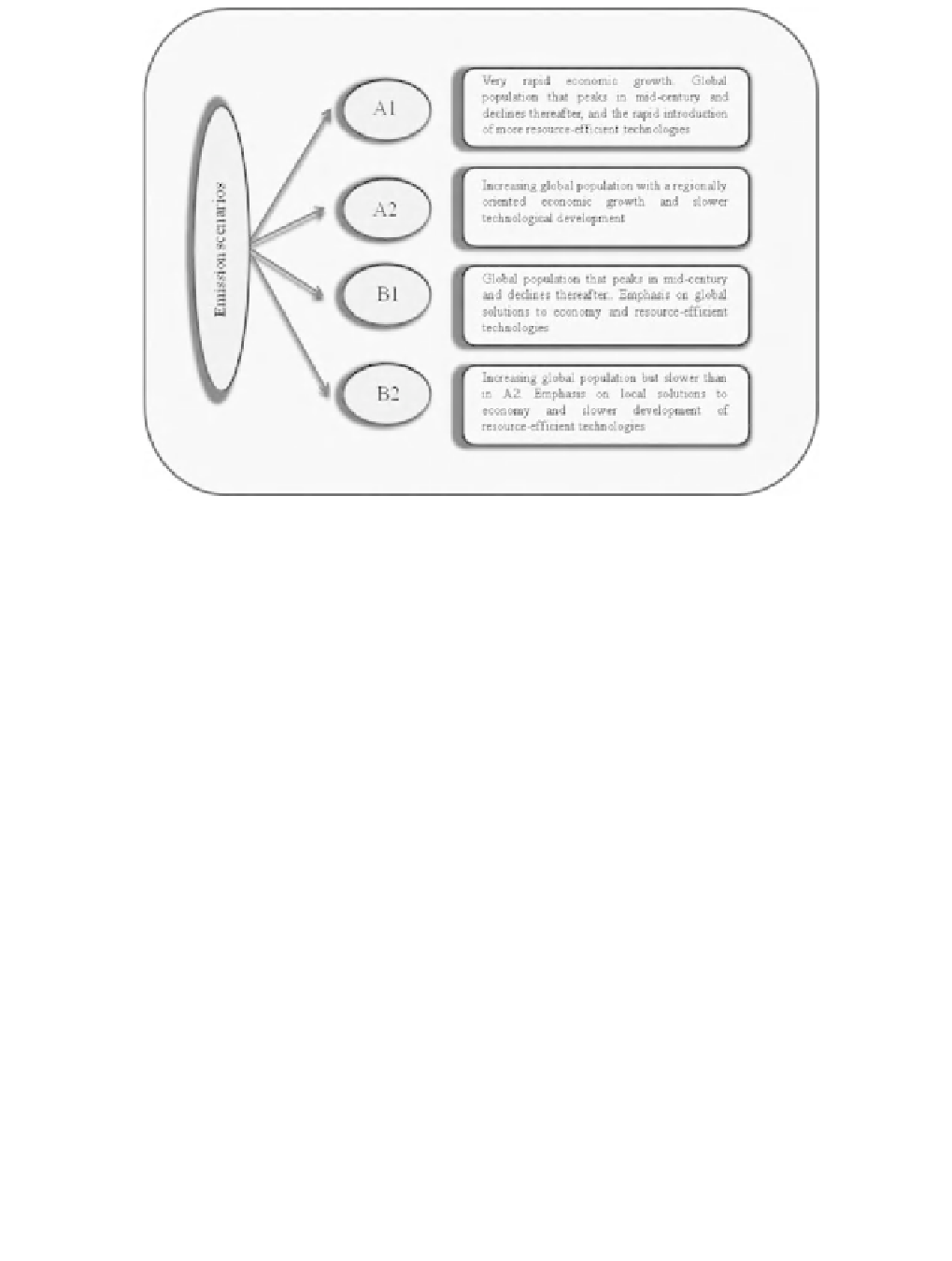Environmental Engineering Reference
In-Depth Information
Figure 9.1
Four families of emission scenarios for greenhouse gases proposed by the Intergov-
ernmental Panel on Climate Change (IPCC, 2007) corresponding to four different possible future
'worlds'. Assumptions about future socioeconomic and technological developments are made for
each scenario
both AOGCMs and RCMs project similar changes for average annual tempera-
ture, annual precipitation, and spring precipitation for 2085. Projected warming
using the AOGCM HadCM3 is 4.28
◦
C and 3.28
◦
C under a pessimistic and an op-
timistic scenario, respectively. The average warming projected by the RCMs will
vary between 3.58
◦
C and 2.58
◦
C. Similarly, the reduction of annual precipitation
projected by the AOGCM varies between 18.9% and 10% for B2, and the aver-
age reduction projected by the RCMs is 13% and 9%, respectively. Finally, for
the spring precipitation, the reduction projected by the AOGCM varies between
21% and 16%, and the average reduction projected by the RCMs is 16% and 8%,
respectively.
A specific trend in Mediterranean mountains is that they will suffer a reduc-
tion in annual rainfall and in spring rainfall, as reported above. In contrast, the
predictions for non-Mediterranean European mountain regions project a slight in-
crease of roughly 10% in both parameters by 2085. Also, Mediterranean moun-
tains, when compared to other mountain ranges, will suffer a similar magnitude
of warming (Nogues-Bravo
et al.,
2007) to those mountains located in temperate
regions of the world, such as the Rocky Mountains or the Himalayas (between

